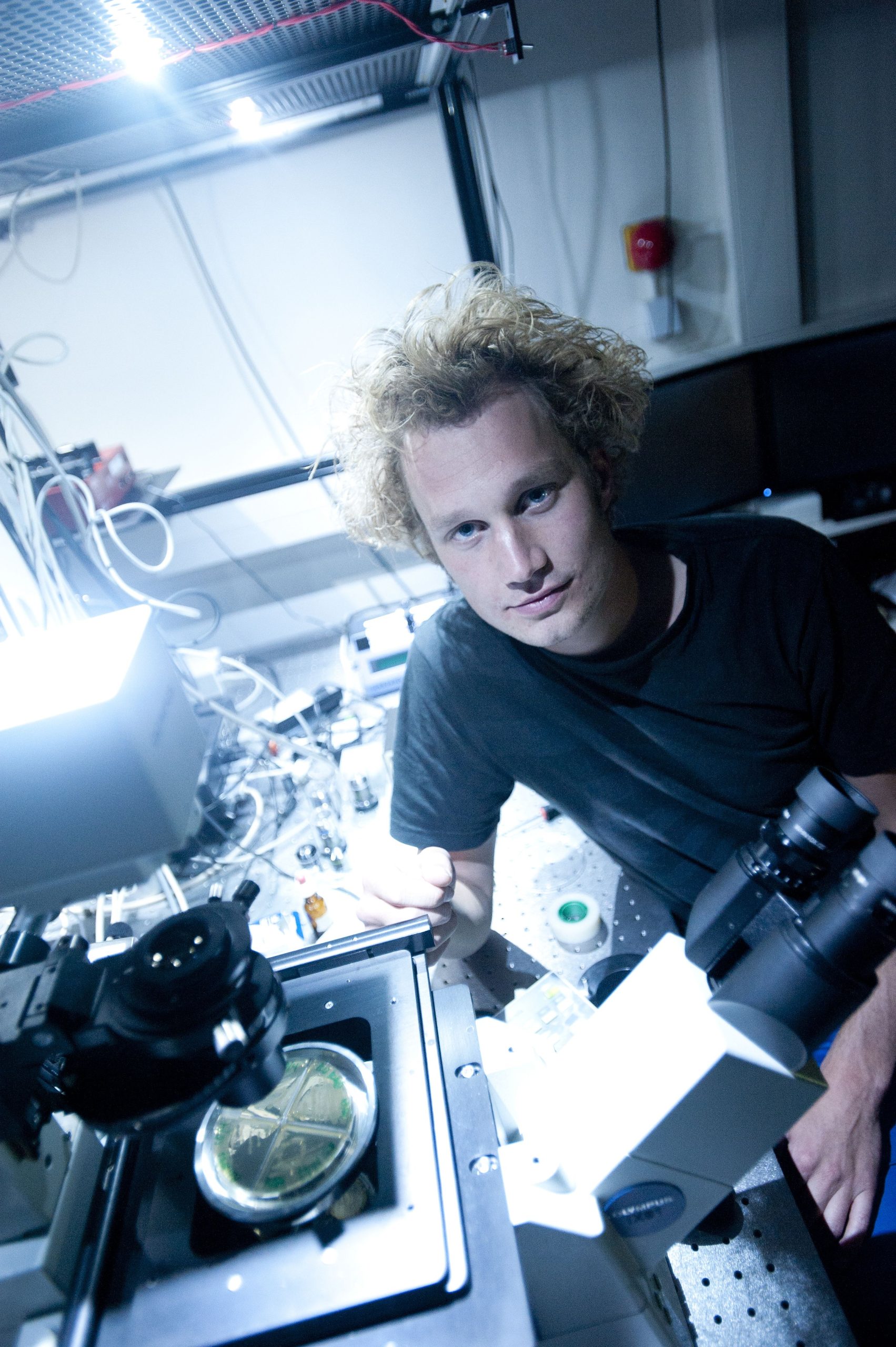Bacteria can colonise environments packed with lethal antibiotics, scientists at TU Delft’s Kavli Institute of Nanoscience discovered.
You might not believe it, but bacteria are cooperative little creatures. When it comes to evading hostile environments, they close ranks. A new study by Delft researchers shows that Escherichia coli bacteria work together in large groups when colonizing an environment filled with the antibiotic kanamycin.
The research could help scientist understand why antibiotics sometimes fail and provide clues to improve their effectiveness.
Biophysicist and ecologist Dr. Felix Hol of the Kavli Institute of Nanoscience is the first author of the study just published in the journal of The International Society for Microbial Ecology.
Together with his colleagues Dr. Bert Hubert, Prof. Cees Dekker and Dr. Juan Keymer, Hol built a microfluidic device. The device consists of two chambers of approximately eight millimetres in length, linked together by a very narrow channel through which bacteria can swim.
In one chamber, there is a constant flow of nutrients allowing for bacteria to multiply very rapidly. The other chamber is a proverbial hell. In addition to nutrients, it contains a very high dose of antibiotic.
The researchers performed ten experiments in which they inoculated fluorescently labelled E. coli into the antibiotic-free compartment. The bacteria successfully invaded the deadly chamber in four of the ten tests. And only when they moved in exceptionally dense groups.
“What is striking is that the bacteria did not develop resistance to the antibiotic after colonising the deadly environment”, said Hol. “They managed to survive solely by cooperating.”
“Exactly how they manage to survive is not clear yet. It could be that the bacteria at the edges sacrifice themselves. Or maybe they alternate, allowing each one of them to catch breath inside the group before going back again to the outer rim and expose themselves to the antibiotic. But it is also possible that an entirely different mechanism allows bacteria to colonise the lethal landscape.”
Subsequent research could clarify this since the researchers can track individual bacteria through time with their microscope. Dr. Juan Keymer, who until one and a half years ago worked at the Kavli Institute of Nanoscience, will continue this work in Santiago, at the Pontificia Universidad Católica de Chile.
The research could improve understanding of the way bacteria behave in the human body. In the body, drugs like antibiotics form concentration gradients. For example, the level is much higher in the intestines than in the lungs. Significant differences can also develop because drugs are taken periodically.
“The research demonstrates how bacteria deal with these kinds of gradients”, said Professor of Bionanoscience Cees Dekker in a TU Delft press release. “Ultimately, this can improve our understanding of the relative efficacy of certain drugs and why some bacterial infections are difficult to cure.”
“It can also help us to gain a better understanding of how bacteria become resistant to drugs. It could be that this form of colonisation that requires no resistance is an initial step, after which resistant bacteria develop in the deadly environment through natural selection.”
Hol is moving on to a different field of research. He wants to understand how pathogens transmitted by mosquitos develop resistance against anti-malaria medications. For this, he just received a Rubicon fellowship from the Netherland’s Organisation for Scientific Research.
This scholarship offers postdocs from all scientific fields the chance to spend one to two years at a university abroad pursuing their research.
Hol is going to Stanford University in October. After a few months in the US, he will be heading out to the jungles of South East Asia.
Movie showing the connector region of the experiment. Two invasion waves can be discerned. The second high-density wave (10 sec) establishes a population in the antibiotic compartment. Frames were acquired every 10 minutes. Total duration of the experiment is 8 hours.



Comments are closed.